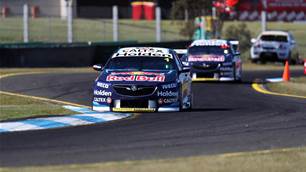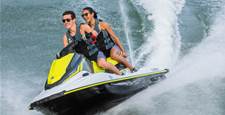Driving a car doesn't take much physical prowess, right? Not according to this V8 Supercars champ.
 Photo: Redbull Photofiles.
Photo: Redbull Photofiles.Jamie Whincup is the first to admit that he’s not the biggest fitness geek in the motor racing game – but obviously the 31-year-old Queenslander is doing something right. With five V8 Supercar championships to his name, and four times a winner at the Bathurst 1000 at his relatively tender age, he’s already one of the greats of the sport – and looks to be headed for superstardom. Which just might be related to the description he gives of himself on Twitter: “Loves the water and driving my car on weekends.” Behind the wheel of the 888 Red Bull Racing Holden, he’s been virtually unstoppable in recent years. Here he tells Inside Sport how he does it.
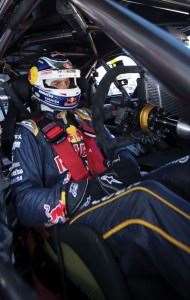 Photo: Redbull Photofiles.
Photo: Redbull Photofiles.ON THE ROAD
“I don’t get much down time. I think we’ve got four race meetings in six weeks at the beginning of the season, so there’s zero time to be chilling out. It settles down a bit in the middle of the year, but lately it’s just flat stick. For example, I recently went down to the Grand Prix in Melbourne on the Monday evening before the race weekend – after that it was a big, long week. There’s heaps of promotional stuff to do on top of the racing. I flew back on the following Monday around lunch time. Tuesday was our debrief, where we sat down and got on top of what went right and what went wrong. Wednesday was just getting back on top of everything else that’s going on in the rest of my life – the email trail was out of control. So then I was able to have a day off for the first time in a couple of weeks. Then it was pretty much straight back into it.
“Corporate activities which surround our team mean a lot of travelling – and the travel is one of the real difficulties in our sport, trying to maintain our health and fitness while we’re away. We’re right on the cusp: we’re away a lot, but we don’t quite travel enough to have routines while we’re on the road. If there were one or two more race meetings during the year, we’d end up owning our own motor homes and all living away from home for a certain amount of the year. But we’re not quite at that point yet. We’re away, but then we go back to base, so in some senses it makes things more difficult. We’re forever living out of a suitcase. It’s a tough thing to juggle but we do the best we can as a team. We definitely try to keep all the team personnel healthy and fit while we’re travelling.”
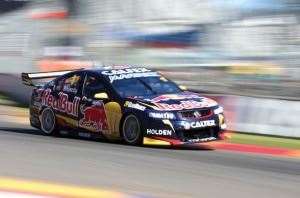 Photo: Redbull Photofiles.
Photo: Redbull Photofiles.HEAT TREATMENT
“A race is around two hours long, so my sport is about endurance. There’s no explosive component, but it can be unbelievably physical. The weight through the gear stick and the wheel isn’t huge, but it is substantial. And you have to do that for two hours in a 55 to 60 degree environment in a three-layer race suit including fireproof underwear head to toe. The G force is another challenge that you can’t underestimate: trying to hold your body up through a 1.5 to 2G corner puts a lot of stress on you that all adds to the physicality of it. On top of that there’s the noise. Just being in a noisy environment for two hours, you end up pretty worn out. It’s a seriously physical sport.
“Outside of racing, this year we’re only allowed four days per year for practice, so it’s crazy. We’ve got no time to perfect our craft whatsoever. How do you practise driving? The answer is you don’t. The cars are extremely expensive to run so they are forever trying to cut those days down – but it’s the same for everyone of course, so you just go out there and make the most of your practice sessions to try and become a better driver. There are simulators and video games, but I haven’t really found a good game for simulating driving – it’s more just for fun. And it just gives me a headache from looking at a screen for too long. I’m not an indoors person, so I really struggle sitting indoors for two hours driving a simulator.
“The best way to learn a track is to go there and walk it to check it all out. But most of the tracks we’ve been to before, so we’ve got really good onboard video footage to look at the year after. The main thing we have is data: the race car has got over 100 sensors on it. All the driver inputs – steering, throttle percentage, brake pressure, G forces, gears – are recorded to every 0.01 of a second. We have all that data and can overlay it from car to car and we study that to work out what was the fastest way through a corner, so that we can either repeat it or try to go faster again.”
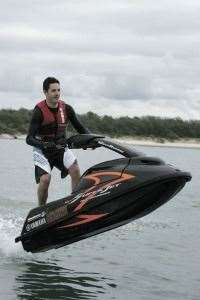 Photo: Yamaha.
Photo: Yamaha.WATCH YOUR WEIGHT?
“The answer to that is no, I don’t really have to. Though I understand the less body fat you’ve got the better the athlete you’re going to be, to a certain degree; the more fat you’ve got the more oxygen it takes to feed your body. Obviously it’s important to keep the skin folds down, but at the same time unless we’re over 90kgs there’s no physical weight disadvantage inside the car – I’m 178cm tall and weigh 76kg. So we don’t need to be stripped of weight; we just need to be as fit and as strong endurance-wise as we can. We want to bring the skin folds down but they’re not extremely strict about it.
“We have a medical guru who comes to each race meeting. He’s our team doctor and physio. He’ll make sure our hydration is correct over the weekend, and we all work together during the year to hook into our nutrition. He’ll do our skin folds every three or four months to make sure we’re on track.
“We have a chef who travels with us to races, but there’s plenty of times where the drivers will leave on the Monday or the Tuesday and the rest of the crew don’t get in until the Thursday, so there’s those days where we are travelling around doing the promotional activities but without the chef there on the road, and that’s a really difficult time for us. It’s critical that we get the right nutrition and right sleep patterns happening just before an event, and unfortunately that’s our most difficult time.
“And hey, it all comes down to budget as well. There’s a lot of money in motor sport but it’s not unlimited. We can’t afford to have someone just to travel around with us organising our food and our nutrition – we’ve got to do it ourselves, and that’s a big part of what we do.
“I was no good in school and I’m no good in a classroom environment, but I’ve been able to spend some quality time with some really good high-profile sports nutritionists and trainers and things like that, so I’ve been able to milk some really important people for their information. I’m forever learning.”
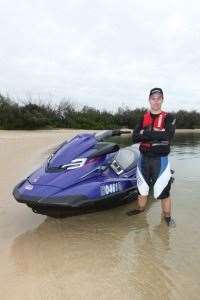 Photo: Yamaha.
Photo: Yamaha.SHARP SHOOTING
“What’s unique about our sport is the mental side of it – it’s a challenge trying to keep the brain sharp in a sport where things are happening so fast. If I were to lead a relatively normal lifestyle outside of racing, when I got to the track everything would be happening too fast and I wouldn’t be able to perform my skills as well as I can.
“We’re forever looking at new ways to do things to stay sharp. I live on the Gold Coast, so I get out on my jet ski for a lap around South Stradbroke Island, going as fast as I can. I know Lowndesy and a few of the other boys use dirt bikes for a similar sort of effect, but I love the jet ski. These things today absolutely fly – they go around 140km/h. Anyone who has travelled at speed on the water knows that it feels like you’re travelling twice as fast as you are on the land.
“You get all the usual things: once you start getting fatigued you start making mistakes – mental errors. And just like in the car you can get yourself in trouble on the jet ski. It’s a tough one, because our contracts say we can’t participate in any dangerous activities outside of motor racing. But on the flip side of that, if you don’t, you become soft and you’re not competitive. So we do have to engage ourselves in dangerous activities outside the race track, which is not a hard thing to do because I love it! I love getting out and going fast on anything I can find. And it’s an important part of what we do.
“A lap of the island takes about 90 minutes to two hours, which is about how long a decent 250k race is. It’s not as physical as riding my bike through the mountains or doing one kilometre intervals with the runners on, but it’s a good way to get out and speed the brain up and keep concentrating for two hours, because if you’re flying along on the water at 140km/h and you miss a wave, well, you can obviously have a big shunt. You can come off these things big time. You’re forever focusing on what waves are coming up and if you hit a wave at the wrong angle you can make a big mess. It’s no different to spearing off a track at 270km. But if there was no danger factor it wouldn’t be relevant to what we do in the car.
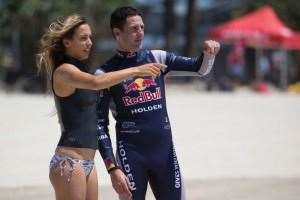 Photo: Redbull Photofiles.
Photo: Redbull Photofiles.“It’s no different to being out on a motorbike track. There’s obviously other skis and vessels out there, so there’s always plenty of people coming the other way, so you’re negotiating that. But the main thing is the changing conditions of the water – if you get distracted and you hit a wave at full tilt when you probably should have been slightly off the gas, yeah, you can have some big offs. Once you’re halfway around the island and you start fatiguing and you start making errors, you start having moments – exactly like we do in the car. You’ve got to really try and train yourself not to panic in those situations.
“And you have to slow down: you’re fatigued and you’re not operating as well as you should. The amateur or the new guy on the block, he’ll just try to keep doing the same lap times and keep doing the same pace, and will most likely end up in the gravel trap on the track or end up having a huge off on the jet ski. It’s an understanding of knowing your limits – and you find your limits by making mistakes and crashing, then learning from them.
“The jet ski fatigue is the same as on a motorbike. You’re in a squat position the whole time, so the lower body gets a good workout. But the upper body gets worked as well: you’re obviously hanging on, so you’re gripping the bars, and gripping your legs around the seat. And then when you get off the gas, you’re not letting your body go over the bars.
“I’ve got both types of jet ski. I love getting out on my stand-up jet ski; that’s a Yamaha Super Jet. That’s more a physical beast to ride; it’s crazy physical trying to go around the corner and you’re lying on the water and you’ve got to pull yourself back up again and keep control – that’s hard work. But my usual lap around Stradbroke Island is on my sitdown jet ski – it’s a Yamaha FZR. It’s around the 260 horsepower mark. It’s an absolute rocket. Zero to 100 in under three seconds. It’s out of control. Our cars on a really good start can go zero to 100 in about 3.2 seconds or so. That’s an exceptional good start, whereas the jet ski does it in about 2.9.”
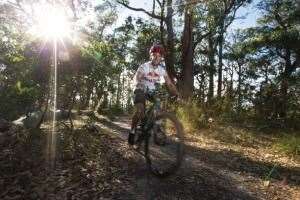 Photo: Redbull Photofiles.
Photo: Redbull Photofiles.GYM SHWIM
“Unfortunately, in keeping fit for our sport you can’t get away from the gym aspect. I get into the gym once a week at least. But I much prefer outdoors stuff. I get out my ski or get out my bike – up here on the Gold Coast is a perfect riding environment. There’s obviously this battle that goes on between cars and bike riders unfortunately, but in saying that they are very good roads up here. That’s my main cardio training.”
DOWN THE HATCH
“My team is linked in with Body Science. They supply Craig [Lowndes] and me and the whole team with all their supplements. And I’m definitely a Red Bull drinker – it has a similar effect to a coffee, but obviously it’s better for you than a coffee. Being an athlete and focusing on my performance, supplements and energy drinks are a big part of that. I have a Red Bull before a race. During a race I mix it with water. Because I’m sweating so much I do need the hydration; it’s important to mix it with water to get plenty of fluid in at the same time.
“You know your windscreen washer in your car? When you pull the lever and it sprays water out? We’ve got that same pump in the bottom of our drink bottles. All we have to do is push a button on our steering wheel and it just squirts the liquid straight in.”
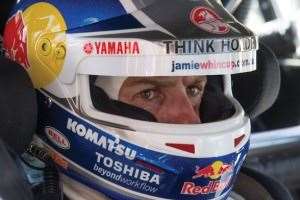 Photo: Redbull Photofiles.
Photo: Redbull Photofiles.HANDS ON
“The only time I really have physio is if I have an injury. But in our sport we’re not having any big impacts, hopefully, so the only injuries I get are just little niggles here and there, mainly from just pushing it a little bit hard in training. But I do put a lot of emphasis on massage. It’s a good thing. I think everyone should have a good massage every fortnight at least.
“I’m a very factual person. I need to see evidence. I’m a bit of a sceptic on most things – any new health trend or anything like that ... I’m not saying they don’t work, but I’m a sceptic until they’re proven right. I definitely wasn’t one of those people wearing a power band, that’s for sure. I’ve really got to see the absolute 100-percent proof in something before I commit to it. Regular massage is definitely a proven thing, but I reckon if you’re not sure about something, steer clear.”
Related Articles
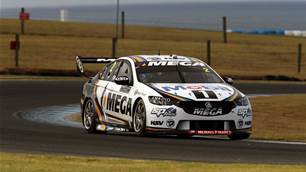
High hopes for Holden aces in Albert Park Supercars stoush
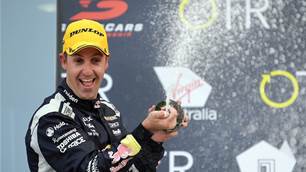
Whincup takes part team ownership of Triple Eight
